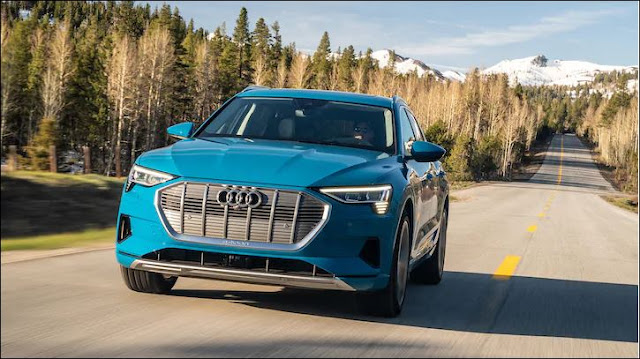Electric-vehicle range isn’t always simple math.
Electric cars are undoubtedly our future, and that’s great because, by and large, they’re great. These days, the only things holding EVs back from mainstream success are price and range. Those are two tough nuts to crack, though, so in the meantime, the luxury end of the market is leading the charge—yet the charge is growing, with new mainstream offerings popping up every month. We recently spent more time behind the wheel of one of the most recent additions, the 2019 Audi e-tron electric crossover, driving it from San Francisco to Tahoe.
For those unfamiliar with that journey, the destination is more than 6,000 feet higher in elevation than the origin, and there’s a fair bit of up and down along the way. Audi had conveniently fitted our e-trons with iPads directly tied into the vehicle’s computer system, as well as high-precision GPS units, to log as much data as possible for the trip.
So how did the all-electric e-tron fare in this challenging terrain? Perhaps unsurprisingly, it did a tremendous job, as did the new Electrify America quick-charger in Sacramento, where we topped up from 58 percent remaining battery to a full charge in just a tick over 22 minutes. Here are the key takeaways from the data we collected on our journey.
Temperatures. Despite doing the drive in mid-May, unseasonably cool weather joined us for the climb to Tahoe, where the temperature upon arrival was a chilly 37 degrees F. Ambient temps for the whole trip ranged between the low of 37 degrees and a high of 64 degrees—lower than optimal for typical EV battery performance, but apparently not a problem for the e-tron.
Average energy usage. We averaged between 1.8 and 2.3 miles per kWh, with the worst of that coming during the steepest portion of the drive, as you’d expect. The group as a whole averaged 2.12 miles per kWh.
High and low ranges. The lowest observed range on a full charge was also during the steepest leg, where we covered 101 miles, ending with 41 miles of range remaining. The highest observed range with the e-tron came during the descent from Tahoe to Reno the next morning; on a mostly downhill run, the range rose to 216 miles, 12 more than the e-tron’s EPA rating.
The charging. Electrify America’s fast-charger can upload electrons to any CCS-compatible vehicle at up to 150 kW, provided the car can handle the load—at the time, the highest-output charger on the market (Tesla announced a new, 250-kW charger just after our drive, though only for appropriately updated Model 3 vehicles at first).
More charging coming. Audi is working with Electrify America to have a total of 480 charging stations online in 2019, with more than 2,000 charging slots in total, covering every major artery of travel throughout the U.S.
Free for e-tron owners. Those who pony up for the electric Audi will get 1,000 kWh in free charging at Electrify America stations.
Observed charge rate. Our rate during our stop in Sacramento was 250 miles of range added per hour of charging, an impressive figure given we were charging in the less-efficient top half of the battery’s capacity (from 58 percent to fully charged).
Charge time. At the full rate on a 150-kW quick charger, it’s possible to bring the e-tron’s battery from zero to 80 percent charged in about 30 minutes.
Source by automobilemag.com





Post a Comment
Post a Comment